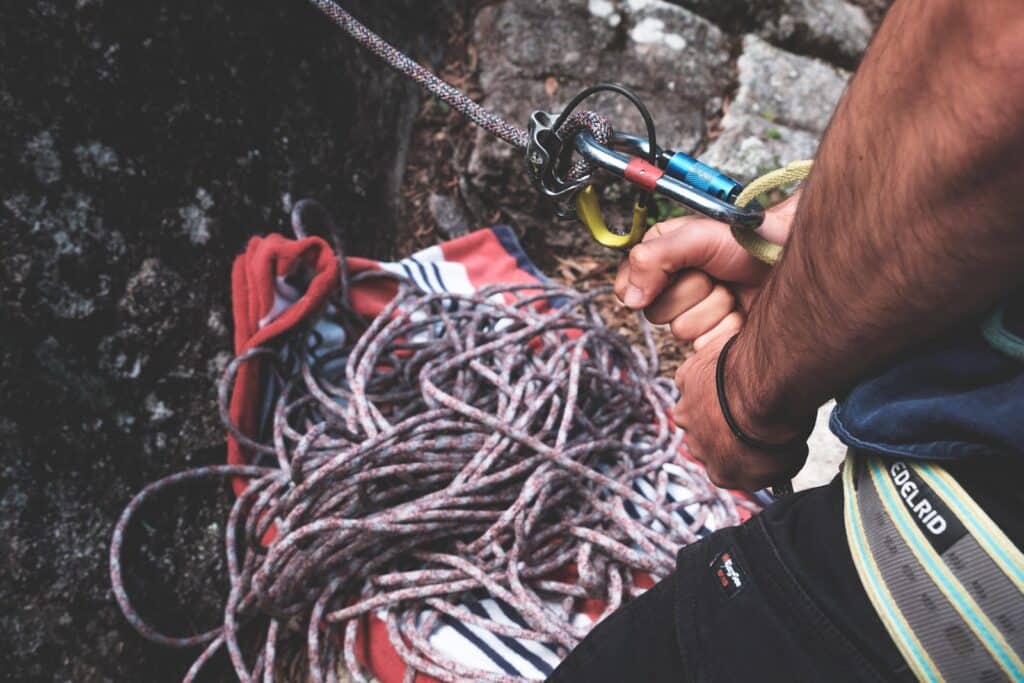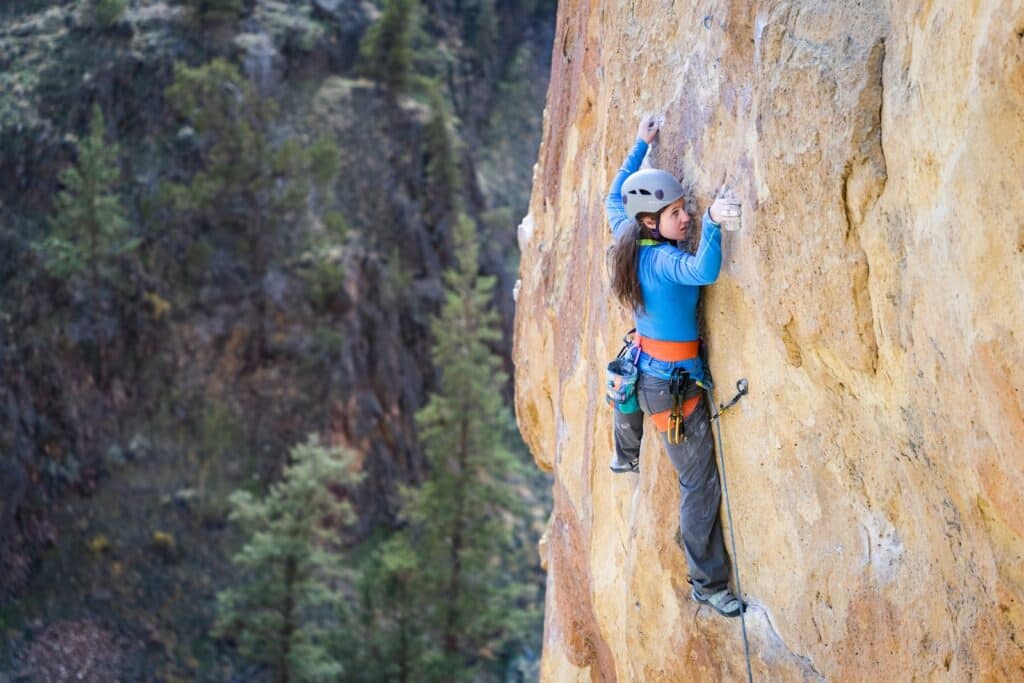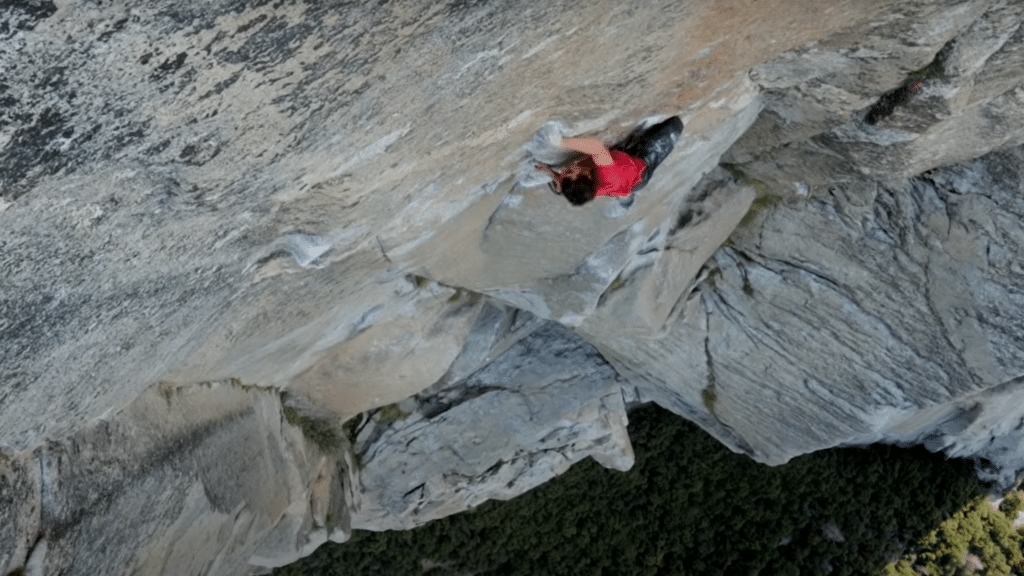Table of Contents
ToggleOrigins of Rock Climbing
Understanding the origins of rock climbing provides a fascinating perspective on the sport we know and love today. The history of rock climbing stretches back to ancient times, with early applications that were largely practical rather than recreational.
Ancient Roots
The roots of rock climbing can be traced back to ancient civilizations across the globe. Paintings dating back to 400 BC in China depict people climbing rock faces. It’s not only in China, but evidence of early climbing activities can also be found in the ancient cultures of Greece and Rome.
Interestingly, the Chinese were the first to use climbing techniques for military purposes, an application quite different from the recreational or sporting context we’re familiar with today (source).
Early Applications
Across the globe, ancient and pre-modern cultures engaged in climbing activities for various reasons, often out of necessity. For instance, people climbed difficult terrains for safety or to reach remote areas. Evidence of such early climbing activities can be found in places like Mustang, Nepal, and the American Southwest.
The origins of modern rock climbing as we know it today, however, can be traced back to the late 19th and early 20th centuries. This period saw the development of specialized equipment such as ropes, carabiners, and harnesses, which made climbing safer and more accessible (Climbing).
From these ancient and practical beginnings, rock climbing evolved into a sport enjoyed by people worldwide. Today, whether you’re interested in multi-pitch climbing training, understanding rock climbing etiquette, or seeking tips from a pro rock climber interview, there’s a wealth of knowledge and community to support your climbing journey.
Evolution of Climbing Techniques
As we trace the history of rock climbing, it’s fascinating to see the evolution of climbing techniques. Let’s take a closer look at three significant styles: Single-Pitch Climbing, Big Wall Climbing, and Bouldering.
Single-Pitch Climbing
Single-pitch climbing has its roots in the pre-1900 era in both the Lake District and Saxony, before it began to spread widely in the late 1970s. Initially, single-pitch climbing often involved the use of artificial aid, but this practice generally ceased in the early 20th century. As climbers sought to challenge themselves and maintain the purity of the sport, “traditional climbing” emerged. This style involves inserting climbing protection into the route while climbing.
However, in the 1980s, French pioneers began pre-drilling bolts from above on rappel into potential new routes for protection. This led to the development of “sport climbing”, marking a significant shift in single-pitch climbing techniques. The rise of sport climbing led to a dramatic increase in climbing standards, grades, tools, competition climbing, and the emergence of professional rock climbers.
Big Wall Climbing
Big Wall Climbing, which originated in the Dolomites and spread across the Alps before reaching Yosemite in the 1950s, presents some of the most formidable challenges in the climbing world. Early ascents involved a mix of free climbing and aid climbing, in which gear is used not just for protection but also to assist upward progress.
However, the best challenges by the end of the 20th century lay in free climbing extreme big walls. Such climbs required not only physical strength and technical skill but also significant mental fortitude and logistical planning. The cross-over between big-wall climbing and bouldering became more evident as the hardest sport climbs began to incorporate intricate bouldering moves.
Bouldering
Bouldering, which started in Fontainebleau, France, and was advanced by Pierre Allain and John Gill, has remained largely consistent since its origins. As a form of free solo climbing, bouldering involves tackling short, challenging sections of rock without the use of ropes or harnesses. The focus is often on individual moves or sequences of moves, and falling is part of the process.
Through the years, bouldering has evolved into a respected discipline in its own right, and today, it’s a popular form of climbing that is accessible to a wide range of climbers. Bouldering problems (routes) are typically less than 20 feet tall and focus on difficult movements. The advent of climbing gyms has further increased bouldering’s popularity.
As we consider the development of these climbing techniques, it’s clear that the evolution of climbing gear and the impact of climbing communities have played a significant role. For more on this, check out our sections on the advancements in climbing gear and the impact of climbing communities. Stay tuned for our upcoming section on notable figures in climbing history to get insights from a pro rock climber interview!
Advancements in Climbing Gear
As we delve deeper into the history of rock climbing, it’s crucial to highlight the significant advancements in climbing gear. Innovations in protection and development of climbing shoes have played pivotal roles in shaping the sport.
Innovations in Protection
The development of modern rock climbing techniques and equipment accelerated in the 20th century. In the 1930s, for instance, the use of pitons—metal spikes hammered into cracks in the rock—revolutionized climbing. This crucial innovation in protection provided climbers with much-needed stability and security, enabling them to tackle more challenging ascents.
The 1970s and 1980s saw further advancements in the realm of climbing gear technology, with the introduction of camming devices. These mechanical pieces of climbing equipment, often referred to as cams, could be inserted into rock crevices and expanded to create a secure anchor. Such innovations not only revolutionized the sport but also increased the safety of climbers, allowing them to tackle more challenging routes.
These advancements in protection gear have been instrumental in shaping the sport and boosting climbers’ confidence. For more insights into climbing gear and techniques, make sure to check out our multi-pitch climbing training guide.
Development of Climbing Shoes
Another key advancement in climbing gear came with the development of specialized climbing shoes. The introduction of sticky rubber shoes in the late 20th century marked a significant turning point in climbing history. These shoes provided climbers with enhanced grip, greatly improving their ability to navigate steep and slippery terrains (Source).
Moreover, the design of climbing shoes evolved to meet the demands of different climbing styles and terrains. From flat-lasted shoes designed for comfort during long multi-pitch climbs, to aggressive, downturned shoes for overhanging sport climbs, the development of climbing footwear has been integral in pushing the boundaries of what’s possible in rock climbing.
As innovations in climbing gear continue to evolve, it’s fascinating to look back and see how far we’ve come. From the early days of using rudimentary equipment to the sophisticated gear we have today, these advancements have undoubtedly transformed the sport of rock climbing. For more on the latest trends and tips in climbing, be sure to visit our rock climbing for kids and home rock climbing workouts for beginners resources.
Impact of Climbing Communities
As we continue to trace the history of rock climbing, one can’t ignore the significant role played by climbing communities. These communities have not only fostered camaraderie among enthusiasts but also led to significant advancements in the sport.
Establishment of Climbing Clubs
In the early stages of rock climbing’s history, like-minded individuals started forming climbing clubs. These clubs served as a platform for climbers to connect, share experiences, and learn from each other. Members would often organize group climbs and share techniques and strategies for tackling different routes.
Climbing clubs also played a vital role in promoting safety among climbers. Through these clubs, climbers were taught the importance of proper equipment use, respecting the environment, and adhering to climbing etiquette. You can learn more about this in our detailed guide on rock climbing etiquette.
Furthermore, climbing clubs have been instrumental in advocating for the rights of climbers, ensuring access to climbing areas, and promoting responsible climbing practices. They’ve also been a source of inspiration for many climbers, fostering a sense of community and belonging.
Emergence of Indoor Climbing
The advent of indoor climbing gyms in the late 20th century marked a significant development in the climbing world. These gyms provided a safe and controlled environment for climbers to practice and train, regardless of the weather conditions outdoors. As a result, they have introduced thousands of new enthusiasts to the sport of rock climbing.
Indoor climbing gyms have also broadened the scope of rock climbing by facilitating the development of climbing competitions and professional climbers. These competitions have significantly contributed to the sport’s popularity and have given climbers a platform to showcase their skills and techniques. You can get a glimpse of this professional world in our pro rock climber interview.
Moreover, the controlled environment of indoor climbing gyms has been particularly beneficial for young enthusiasts, making rock climbing for kids a reality. It has also allowed beginners to practice safely and conveniently with our home rock climbing workouts for beginners.
In conclusion, climbing communities, through the establishment of climbing clubs and the emergence of indoor climbing, have undeniably played a significant role in shaping the history of rock climbing. They’ve made the sport more accessible and attractive to a larger audience, contributing to the continual growth and evolution of rock climbing.
Rock Climbing in Modern Times
In the context of the history of rock climbing, the modern era has been particularly transformative, with significant developments in climbing styles and the recognition of climbing as a competitive sport.
Introduction of Sport Climbing
Modern recreational climbing began in the late 19th century, propelled forward by breakthroughs in technology and tactics (National Geographic). The advent of sport climbing, a style that emphasizes physical difficulty and athletic performance over adventure and risk-taking, marked a significant shift in the climbing world. The rules and standards of sport climbing allowed for more accessible and safer climbing experiences, making it appealing to a wider audience.
One of the most significant developments in modern climbing is the rise of indoor climbing gyms. These facilities have introduced thousands of new enthusiasts to the sport of rock climbing. Indoor climbing provides a controlled and convenient environment for training, making it an ideal starting point for beginners. It also offers a platform for experienced climbers to refine their skills, develop strength and endurance, and practice complex climbing techniques. For more information on training for climbing, check out our article on multi-pitch climbing training.
Climbing in the Olympics
A significant milestone in the history of rock climbing is its debut as an Olympic sport. In the 2020 Tokyo Olympics, climbing was officially included as a competitive discipline. This recognition has boosted the sport’s profile on an international level, drawing attention to the athleticism, skill, and dedication required in rock climbing.
The inclusion of climbing in the Olympics has also spurred the growth of competitive climbing events around the world, from local climbing competitions to national climbing championships. These events provide opportunities for climbers to showcase their skills, connect with other climbers, and contribute to the development of the sport.
Despite the growing popularity of competitive climbing, many climbers still gravitate towards outdoor climbing and exploration. Elite climber-explorers continue to travel to remote areas in search of unexplored climbing routes, pushing the boundaries of the sport.
Whether you’re a seasoned climber or a newcomer to the sport, the modern era of climbing offers a wealth of opportunities to engage with this dynamic and exhilarating sport. From honing your skills in an indoor climbing gym to embarking on outdoor climbing adventures, there are countless ways to enjoy and participate in the evolving world of rock climbing.
Notable Figures in Climbing History
The history of rock climbing is studded with extraordinary individuals who transformed the sport through their passion, innovation, and daring feats.
Pioneers of the Sport
In the 1950s, the advent of clean climbing techniques that emphasized minimal impact on the rock marked a significant turning point in the sport. One of the most renowned figures from this era was Royal Robbins, who made groundbreaking ascents in Yosemite National Park. Robbins’ commitment to preserving the integrity of the rock face and his bold ascents, including his first ascent of the Northwest Face of Half Dome in Yosemite, have solidified his legacy as a pioneering figure in the history of rock climbing.
The 1980s and 1990s saw an explosion in rock climbing popularity, and the sport gained recognition as a competitive discipline (Source). This period was marked by the development of sport climbing, which led to a dramatic increase in climbing standards, grades, and tools. Pioneers like François Legrand dominated the competition climbing scene, pushing the boundaries of what was thought possible in the sport (Wikipedia).
Current Record-Setters
Today, the sport of rock climbing continues to evolve, thanks in large part to the contributions of leading climbers. Figures like Wolfgang Güllich, Jerry Moffatt, Alexander Huber, Fred Nicole, Chris Sharma, Adam Ondra, and Tommy Caldwell have set records in several sub-disciplines of rock climbing.
These athletes have expanded the horizons of rock climbing, tackling extreme big walls and incorporating bouldering moves into their ascents. Their achievements, often thought unthinkable, have inspired a new generation of climbers to push their own limits and contribute to the ongoing evolution of the sport.
For an inside look at the life of a professional climber, check out our pro rock climber interview.
The story of rock climbing is a continuing journey of discovery, innovation, and above all, human determination. As we look back on the pioneers of the sport and the record-setters of today, we can appreciate the courage, ingenuity, and physical prowess that have shaped the history of rock climbing. For those interested in starting their own climbing journey, our home rock climbing workouts for beginners might be a good place to start.













